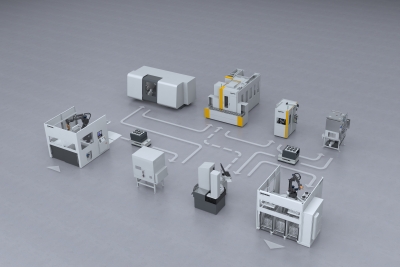
While we still a way to go to achieve autonomous driving on the road, but factories are miles ahead: AGVs (automatic guided vehicles) are already being used in the area of production. They are responsible for intralogistical tasks in production transporting workpieces from unfinished parts to finished parts between the respective stages of production. Here’s how raw material makes it into a fully automated production system finished parts exit the system with Liebherr solutions.
Reliable 3D vision systems optically scan the workpiece environment and evaluate it. A robot with patented auxiliary axes can use this information to reliably unload randomly stored parts from a container with a depth of up to 1 m and position them on an AGV. Picking from the box is more complicated the less order there is when the workpieces are delivered, which means that more precision is needed to place them.
Similar rules apply for the production outlet: The robot arm of a pallet cell picks the machined workpieces from the AGV and then palletizes them in workpiece carriers such as wire crates or blisters. “Multilayered storage in crates or blisters during which the robot restacks the crates and blisters in addition to workpiece handling as an intermediate step is also not a problem”, explains Thomas Mattern, head of automation system development. “Since the grippers can be changed flexibly, many options are available to us.
“This is the step that has been missing in automation technology: Individual production processes are already heavily automated, and now they are connected flexibly to each other,” Mattern said.






